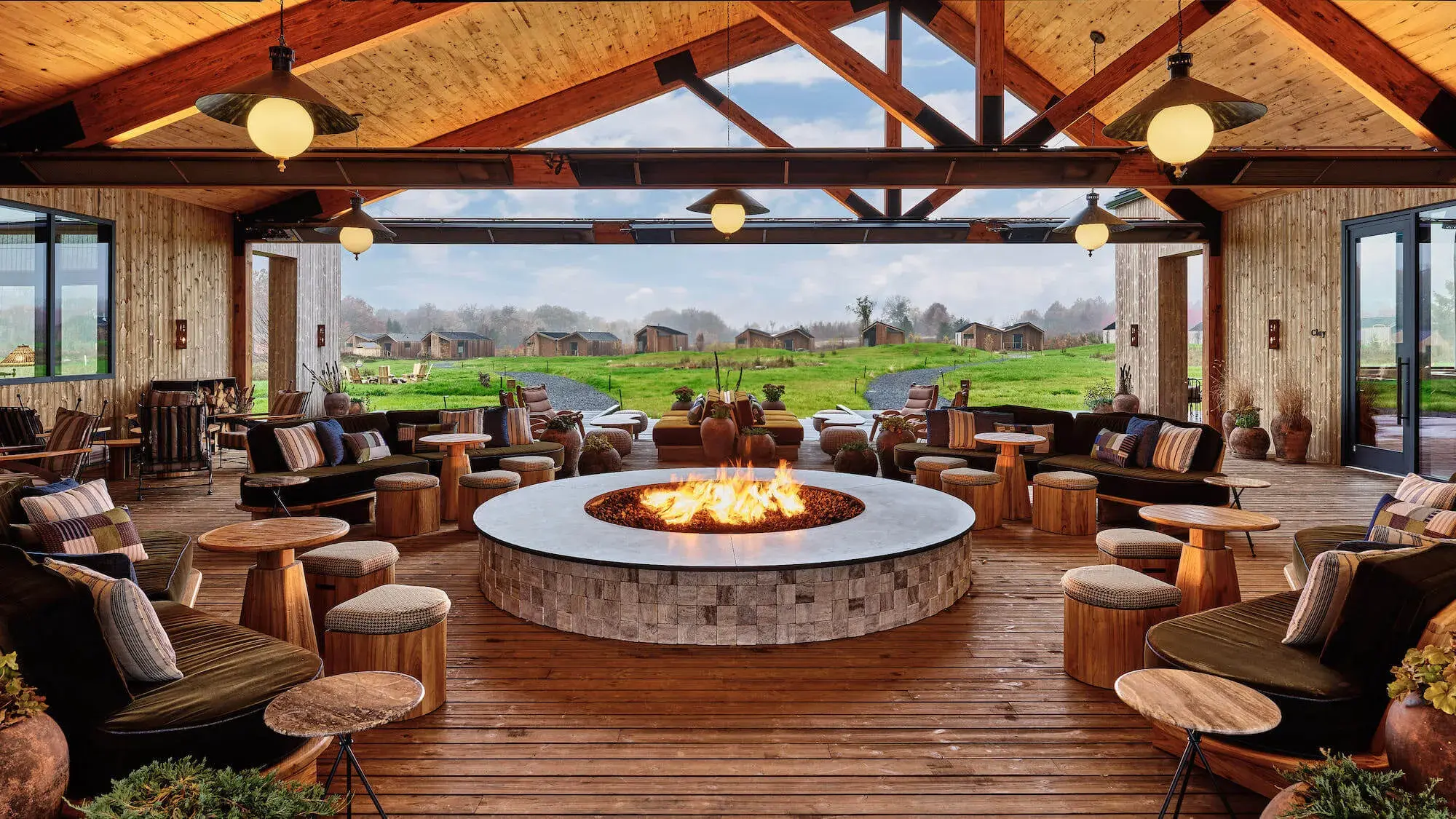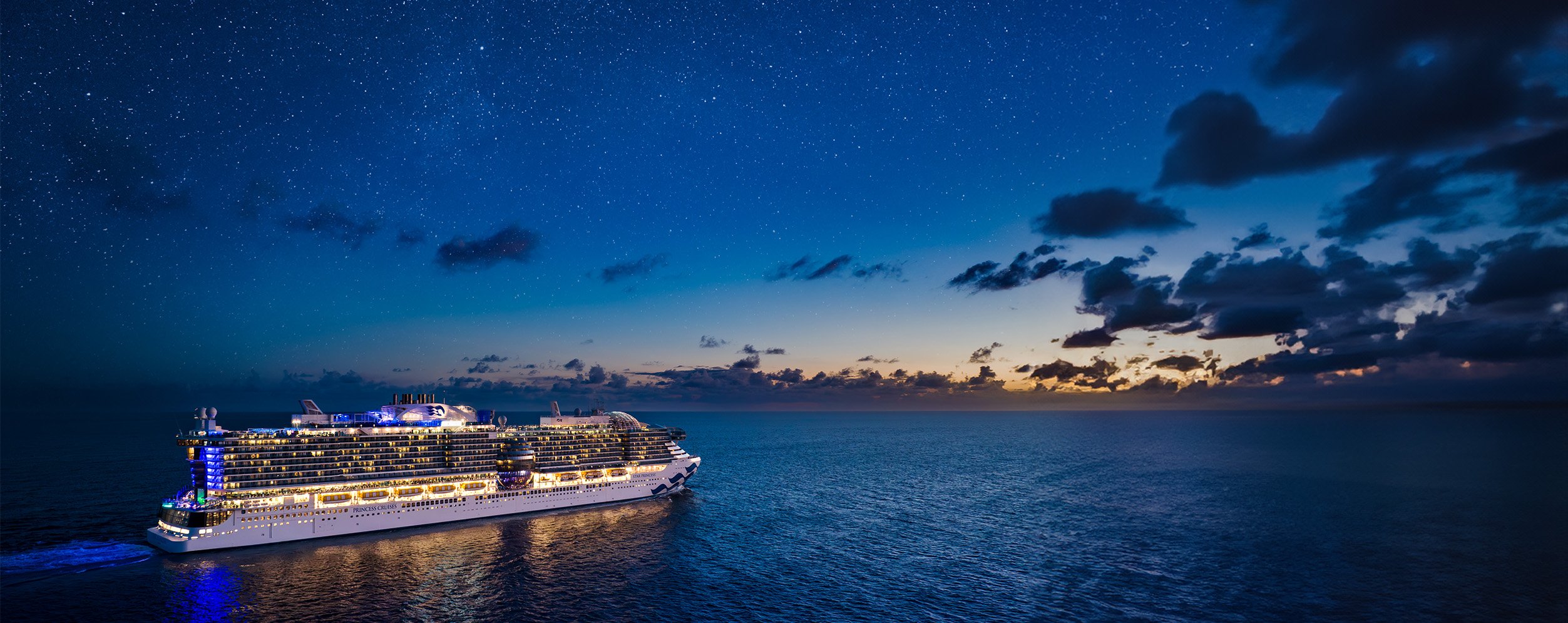The aurora borealis is elusive & plays hard to get — which makes it all the more attractive
It’s an awe-inspiring natural phenomenon and there’s no guarantee of a show. The exciting news is that scientists and astronomers have predicted that 2024 will coincide with a solar maximum, marking a period of increased solar activity and storms. It's important to note that it’s impossible to pinpoint the exact times, locations and intensities of Northern Lights displays as the phenomena can be influenced by numerous factors, making the Northern Lights displays as exciting and challenging as ever. Some things you just have to see for yourself.
Usually Aurora Borealis is only visible in the northern most parts of the world, hence the name Northern Lights. Most recently, due to the solar maximum, the northern lights have been spotted as far south as Texas and even Hawaii!
Hurtigruten's Northern Light Promise & the World's First Chief Aurora Chaser
Embark on a celestial journey on Hurtigruten during the anticipated Solar Maximum of 2024-25, promising the most spectacular Northern Lights display in over a decade. Seize the opportunity to witness, learn, and photograph this extraordinary phenomenon now.
Book confidently with Hurtigruten's Northern Lights Promise – get a free trip if the lights don't appear on select voyages- terms and conditions apply.
Don't miss this celestial spectacle – book your journey and embrace the magic of the Northern Lights.
When and where can you see the Northern Lights?
Alaska in September
Certain conditions and locations may increase the likelihood of this phenomenon occurring. The best month to see the Northern Lights in Alaska is while cruising in September on a Princess Cruise. With fewer hours of daylight and more darkness, there are additional chances to see the waltzing colors illuminate the evening sky.
Featured Cruise: 7 Day Inside Passage on Discovery Princess
Now for the night owls, peak hours for aurora borealis observation are between 12:30 a.m. and 4:30 a.m. Keep in mind that weather plays an instrumental part in the successful observation of the aurora borealis. Cloudless skies must clear the path for the atmospheric display. While the best time of year to see the Northern Lights in Alaska is in winter, you may still have the opportunity to see them on a late September cruise.
Book now and save up to 35% off and 3rd and 4th guest are free! Plus when you book your trip with MVT you will enjoy one complimentary specialty dinner for two when booked in a mini-suite or higher on all published 6+ day voyages.
The Nordics in Spring
As winter transitions to spring, the Nordics take on a new charm with what locals affectionately call "April Lights." Imagine skiing down pristine slopes surrounded by the beauty of a transitioning season. The soft glow of April Lights adds an extra layer of enchantment to the skiing experience, making it a perfect time for both seasoned skiers and those looking to try their hand at this exhilarating sport.
In Spring, you can experience the unique phenomenon of the Midnight Sun, where the sun lingers above the horizon for an extended period, casting a warm and golden hue over the landscapes. Take advantage of the longer days to explore the region's natural wonders, from majestic fjords to snow-covered peaks.
Discover something unexpected in the special way only Globus can share—with sightseeing highlights to off-the-beaten-path surprises to out-of-this world moments you’ll remember for a lifetime! Every Globus tour includes exclusive Local Favorites, specially included to share the authentic experiences that make each destination unique. Get to know the locals and local flavors you might just miss on your own! Explore or relax as you please, or choose exciting options available at MyGlobus. Get local maps and free time tips on your GlobusGO mobile app. Your Tour Director can suggest the perfect way to design your day.
Book a select 2024 Globus Tour to save an additional $350 off per person on the land price. Booking must be made between May 1, 2024 -June 30, 2024, for select travel dates in 2024.
Maximize your chances of spotting the Northern Lights with Aurora Expeditions
Aurora Expeditions’ Northern Lights adventures take expeditioners across the seas, seeking out the aurora borealis in multiple destinations round the Arctic Circle. Onboard your small, purpose-built ship, the Greg Mortimer, you’ll skirt around the Norwegian and Greenland seas, exploring remote islands and villages by day and looking skyward as night falls in the hopes of catching a magical lights display.
Traveling by expedition ship means that you’ll be able to visit remote areas in the High Arctic, with little or no light pollution, to maximise your chances of seeing the aurora. Navigate hidden passageways, search for iconic wildlife, sail through majestic fjords and enjoy a once-in-a-lifetime adventure.
Travellng in small groups with Aurora Expeditions means that, unlike on larger ships, you can join every excursion, getting into the environment and exploring via our comprehensive activity program that includes Zodiac cruises, kayaking, guided hikes and more. Book with MVT to enjoy these exclusive benefits:
- Enjoy an Air Credit of US $2,500/pp or AU $3,750/pp on 2024 departures
- Plus save up to 15% on select 2024 voyages

Autumn in Scandinavia
When people think of witnessing the Northern Lights, they often imagine braving the freezing temperatures of winter. However, it is also possible to see this natural phenomenon in the autumn in Scandinavia! WIth mild weather and a chance for berry picking, 50 Degrees North suggests this is the best time of year to see the lights among fewer crowds.
Featured Tour: 50 Degrees North
Wilderness Aurora Lodge is Salla
5-day Independent Tour. Highlights include:
- Lappish scenery away from the crowds in Finnish Lapland
- Stay in a studio or family lodge with a hot tub
- Reindeer farm visit
- Guided nature hike
- Canoe Trip on a wilderness lake
Holiday Wonderland in Iceland
Abercrombie & Kent is an award-winning, luxury travel company- discover Iceland in style & in technicolor. You’ll have a driver-guide and car all to yourself, for touring by day and on standby at night, should the aurora borealis look likely to appear. A&K can’t guarantee that you’ll see the Northern Lights, but your guide will check the forecast each day. If the conditions look good he’ll drive you into the darkness of the countryside to catch a glimpse, should they show.
Atlas Ocean Voyages Stargazing & Astronomy Workshop
Atlas Focus Lab includes Stargazing & Astronomy Workshops alongside resident astronomer, Jonathan Ward. The author of space history books and avid astrophotographer, Jonathan will bring his passion and expertise to select 2024 expeditions along with special gastronomic quests and cultural experts and storytellers. From stargazing workshops on deck with a telescope to enlightening talks about the cosmos. Atlas Ocean Voyages invites explorers to discover the history of astronavigation, gaze upon planetary bodies over rugged mountain peaks and navigate the Atlantic with uninterrupted views of the stars on the expeditions featured below.
2 for 1 Fares on Luxury Yacht Voyages on Scenic
Experience the world like never before on board Scenic Eclipse, The World’s First Discovery Yachts. Receive 2 for 1 Fares on all 2024/2025 Luxury Ocean Voyages on Scenic Cruises, plus our complimentary Flexible Booking Plan that allows you peace of mind for your journey. This is combinable with our pay in full air offer and Scenic Select savings. Elevate your journey, receive up to free business class airfare offers available when you pay in full based on suite category and destination.
The Science Behind What Causes the Northern Lights
The aurora borealis happens in the Northern Hemisphere when the sun’s electrically charged particles, riding on a solar wind, enter the Earth’s atmosphere and collide with gases — namely oxygen and nitrogen. When the sun is at its most active is when you're most likely to catch a spectacular display. The name comes from Aurora, the Roman goddess of dawn, and Boreas, the Greek god of the north wind. Much of Canada’s North lies beneath the Northern Hemisphere’s Auroral Oval, a hot spot for activity.
The auroras can display a variety of colors, predominantly green but also pink, red, yellow, blue, and violet. The color depends on the type of gas in the Earth's atmosphere that is being excited:
- Green: Produced by oxygen molecules about 60 miles above the Earth
- Red: Produced by oxygen at higher altitudes, above 150 miles
-
Pink and Yellow: Sometimes, the auroras can display pink or yellow hues, which are a mix of red and green lights, typically occurring at lower altitudes
-
Purple and Blue: These colors are created by nitrogen molecules. When high-energy particles collide with nitrogen, they produce blue or purple light, depending on the amount of energy involved
Why Use a Travel Advisor?
A travel advisor makes your dream trip reality. The expert knowledge and insider access plus room upgrades and resort credits are just some of the reasons a travel advisor will help your vacation be as seamless as possible.





